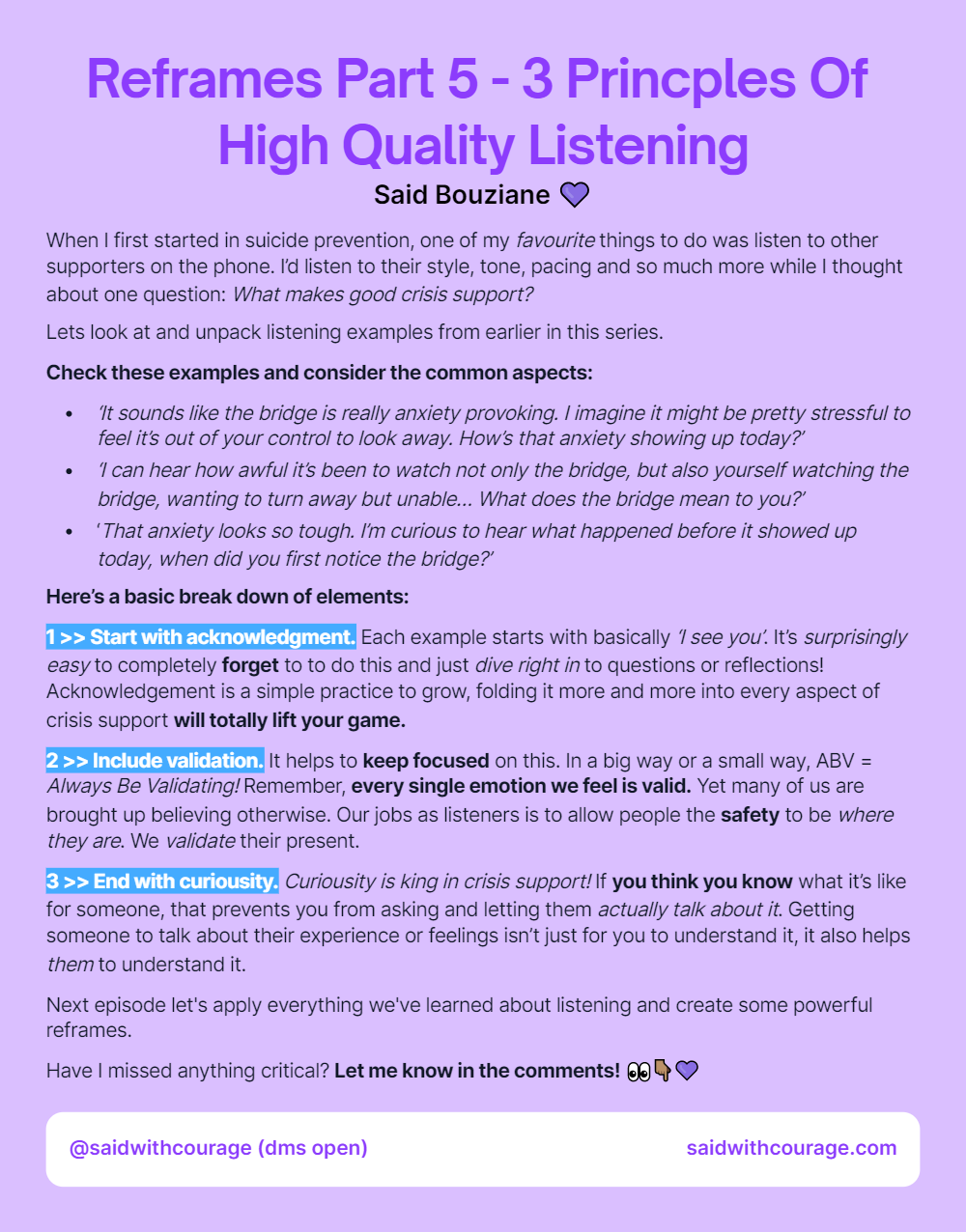When I first started in suicide prevention, one of my favourite things to do was listen to other supporters on the phone. I’d listen to their style, tone, pacing and so much more while I thought about one question: What makes good crisis support?
Lets look at and unpack listening examples from earlier in this series.
Check these examples and consider the common aspects:
- ‘It sounds like the bridge is really anxiety provoking. I imagine it might be pretty stressful to feel it’s out of your control to look away. How’s that anxiety showing up today?’
- ‘I can hear how awful it’s been to watch not only the bridge, but also yourself watching the bridge, wanting to turn away but unable… What does the bridge mean to you?’
- ‘That anxiety looks so tough. I’m curious to hear what happened before it showed up today, when did you first notice the bridge?’
Here’s a basic break down of elements:
1 >> Start with acknowledgment. Each example starts with basically ‘I see you’. It’s surprisingly easy to completely forget to to do this and just dive right in to questions or reflections! Acknowledgement is a simple practice to grow, folding it more and more into every aspect of crisis support will totally lift your game.
2 >> Include validation. It helps to keep focused on this. In a big way or a small way, ABV = Always Be Validating! Remember, every single emotion we feel is valid. Yet many of us are brought up believing otherwise. Our jobs as listeners is to allow people the safety to be where they are. We validate their present.
3 >> End with curiousity. Curiousity is king in crisis support! If you think you know what it’s like for someone, that prevents you from asking and letting them actually talk about it. Getting someone to talk about their experience or feelings isn’t just for you to understand it, it also helps them to understand it.
Next episode let’s apply everything we’ve learned about listening and create some powerful reframes.
Have I missed anything critical? Let me know in the comments! 👀👇🏽💜

